Jiannan Xiang
GR00T N1: An Open Foundation Model for Generalist Humanoid Robots
Mar 18, 2025Abstract:General-purpose robots need a versatile body and an intelligent mind. Recent advancements in humanoid robots have shown great promise as a hardware platform for building generalist autonomy in the human world. A robot foundation model, trained on massive and diverse data sources, is essential for enabling the robots to reason about novel situations, robustly handle real-world variability, and rapidly learn new tasks. To this end, we introduce GR00T N1, an open foundation model for humanoid robots. GR00T N1 is a Vision-Language-Action (VLA) model with a dual-system architecture. The vision-language module (System 2) interprets the environment through vision and language instructions. The subsequent diffusion transformer module (System 1) generates fluid motor actions in real time. Both modules are tightly coupled and jointly trained end-to-end. We train GR00T N1 with a heterogeneous mixture of real-robot trajectories, human videos, and synthetically generated datasets. We show that our generalist robot model GR00T N1 outperforms the state-of-the-art imitation learning baselines on standard simulation benchmarks across multiple robot embodiments. Furthermore, we deploy our model on the Fourier GR-1 humanoid robot for language-conditioned bimanual manipulation tasks, achieving strong performance with high data efficiency.
Pandora: Towards General World Model with Natural Language Actions and Video States
Jun 12, 2024



Abstract:World models simulate future states of the world in response to different actions. They facilitate interactive content creation and provides a foundation for grounded, long-horizon reasoning. Current foundation models do not fully meet the capabilities of general world models: large language models (LLMs) are constrained by their reliance on language modality and their limited understanding of the physical world, while video models lack interactive action control over the world simulations. This paper makes a step towards building a general world model by introducing Pandora, a hybrid autoregressive-diffusion model that simulates world states by generating videos and allows real-time control with free-text actions. Pandora achieves domain generality, video consistency, and controllability through large-scale pretraining and instruction tuning. Crucially, Pandora bypasses the cost of training-from-scratch by integrating a pretrained LLM (7B) and a pretrained video model, requiring only additional lightweight finetuning. We illustrate extensive outputs by Pandora across diverse domains (indoor/outdoor, natural/urban, human/robot, 2D/3D, etc.). The results indicate great potential of building stronger general world models with larger-scale training.
MMToM-QA: Multimodal Theory of Mind Question Answering
Jan 16, 2024Abstract:Theory of Mind (ToM), the ability to understand people's minds, is an essential ingredient for developing machines with human-level social intelligence. Recent machine learning models, particularly large language models, seem to show some aspects of ToM understanding. However, existing ToM benchmarks use unimodal datasets - either video or text. Human ToM, on the other hand, is more than video or text understanding. People can flexibly reason about another person's mind based on conceptual representations (e.g., goals, beliefs, plans) extracted from any available data, which can include visual cues, linguistic narratives, or both. To address this, we introduce a multimodal Theory of Mind question answering (MMToM-QA) benchmark. MMToM-QA comprehensively evaluates machine ToM both on multimodal data and on different kinds of unimodal data about a person's activity in a household environment. To engineer multimodal ToM capacity, we propose a novel method, BIP-ALM (Bayesian Inverse Planning Accelerated by Language Models). BIP-ALM extracts unified representations from multimodal data and utilizes language models for scalable Bayesian inverse planning. We conducted a systematic comparison of human performance, BIP-ALM, and state-of-the-art models, including GPT-4. The experiments demonstrate that large language models and large multimodal models still lack robust ToM capacity. BIP-ALM, on the other hand, shows promising results, by leveraging the power of both model-based mental inference and language models.
Language Models Meet World Models: Embodied Experiences Enhance Language Models
May 22, 2023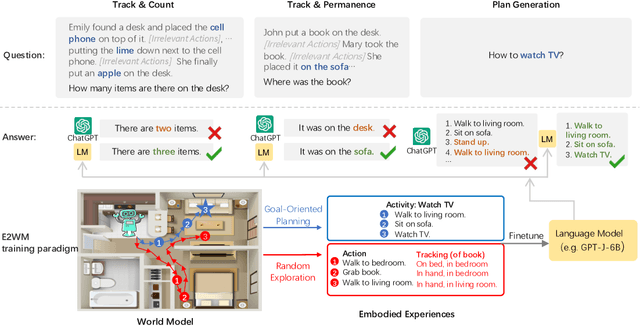

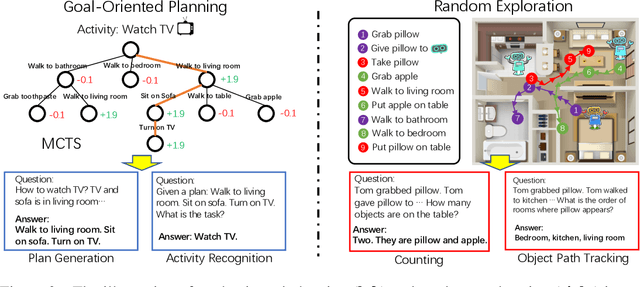

Abstract:While large language models (LMs) have shown remarkable capabilities across numerous tasks, they often struggle with simple reasoning and planning in physical environments, such as understanding object permanence or planning household activities. The limitation arises from the fact that LMs are trained only on written text and miss essential embodied knowledge and skills. In this paper, we propose a new paradigm of enhancing LMs by finetuning them with world models, to gain diverse embodied knowledge while retaining their general language capabilities. Our approach deploys an embodied agent in a world model, particularly a simulator of the physical world (VirtualHome), and acquires a diverse set of embodied experiences through both goal-oriented planning and random exploration. These experiences are then used to finetune LMs to teach diverse abilities of reasoning and acting in the physical world, e.g., planning and completing goals, object permanence and tracking, etc. Moreover, it is desirable to preserve the generality of LMs during finetuning, which facilitates generalizing the embodied knowledge across tasks rather than being tied to specific simulations. We thus further introduce the classical elastic weight consolidation (EWC) for selective weight updates, combined with low-rank adapters (LoRA) for training efficiency. Extensive experiments show our approach substantially improves base LMs on 18 downstream tasks by 64.28% on average. In particular, the small LMs (1.3B and 6B) enhanced by our approach match or even outperform much larger LMs (e.g., ChatGPT).
ASDOT: Any-Shot Data-to-Text Generation with Pretrained Language Models
Oct 11, 2022



Abstract:Data-to-text generation is challenging due to the great variety of the input data in terms of domains (e.g., finance vs sports) or schemata (e.g., diverse predicates). Recent end-to-end neural methods thus require substantial training examples to learn to disambiguate and describe the data. Yet, real-world data-to-text problems often suffer from various data-scarce issues: one may have access to only a handful of or no training examples, and/or have to rely on examples in a different domain or schema. To fill this gap, we propose Any-Shot Data-to-Text (ASDOT), a new approach flexibly applicable to diverse settings by making efficient use of any given (or no) examples. ASDOT consists of two steps, data disambiguation and sentence fusion, both of which are amenable to be solved with off-the-shelf pretrained language models (LMs) with optional finetuning. In the data disambiguation stage, we employ the prompted GPT-3 model to understand possibly ambiguous triples from the input data and convert each into a short sentence with reduced ambiguity. The sentence fusion stage then uses an LM like T5 to fuse all the resulting sentences into a coherent paragraph as the final description. We evaluate extensively on various datasets in different scenarios, including the zero-/few-/full-shot settings, and generalization to unseen predicates and out-of-domain data. Experimental results show that ASDOT consistently achieves significant improvement over baselines, e.g., a 30.81 BLEU gain on the DART dataset under the zero-shot setting.
Visualizing the Relationship Between Encoded Linguistic Information and Task Performance
Mar 29, 2022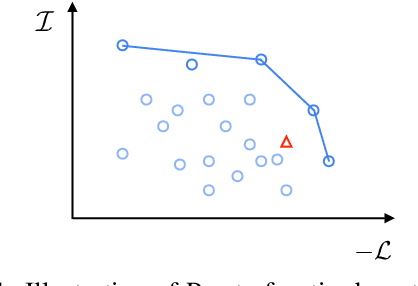
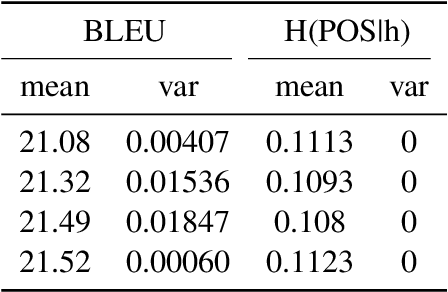
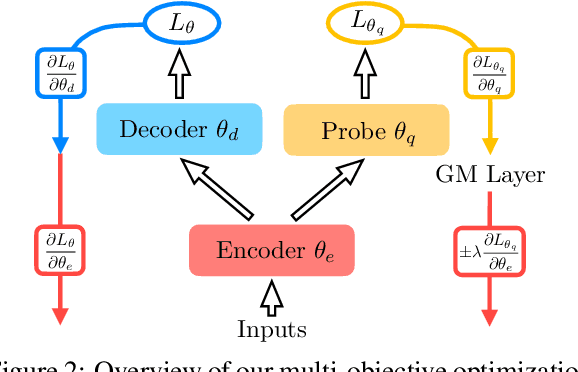
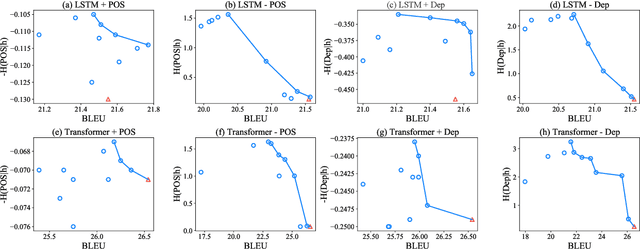
Abstract:Probing is popular to analyze whether linguistic information can be captured by a well-trained deep neural model, but it is hard to answer how the change of the encoded linguistic information will affect task performance. To this end, we study the dynamic relationship between the encoded linguistic information and task performance from the viewpoint of Pareto Optimality. Its key idea is to obtain a set of models which are Pareto-optimal in terms of both objectives. From this viewpoint, we propose a method to optimize the Pareto-optimal models by formalizing it as a multi-objective optimization problem. We conduct experiments on two popular NLP tasks, i.e., machine translation and language modeling, and investigate the relationship between several kinds of linguistic information and task performances. Experimental results demonstrate that the proposed method is better than a baseline method. Our empirical findings suggest that some syntactic information is helpful for NLP tasks whereas encoding more syntactic information does not necessarily lead to better performance, because the model architecture is also an important factor.
Investigating Data Variance in Evaluations of Automatic Machine Translation Metrics
Mar 29, 2022
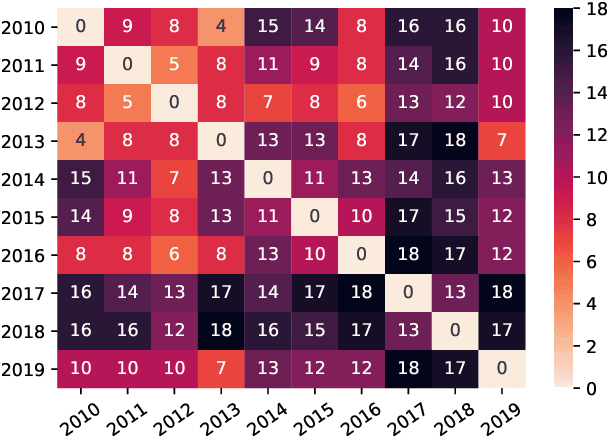
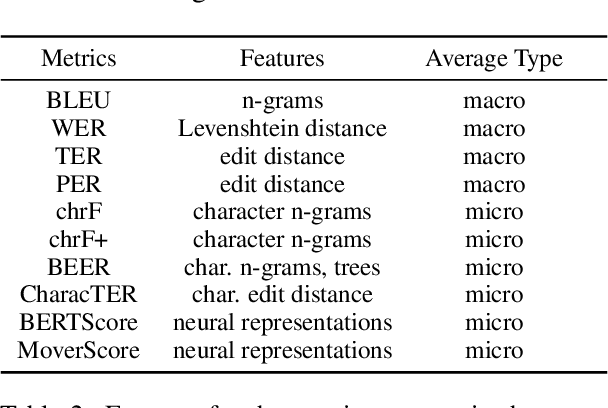
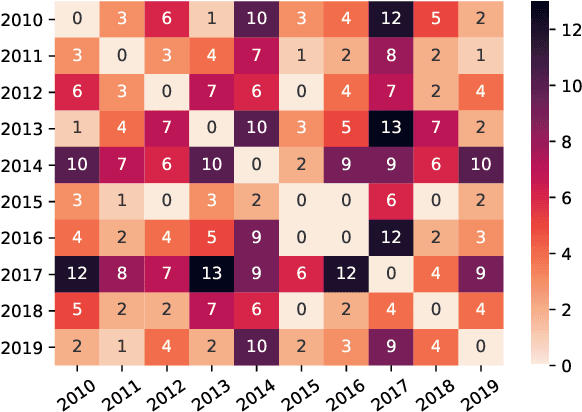
Abstract:Current practices in metric evaluation focus on one single dataset, e.g., Newstest dataset in each year's WMT Metrics Shared Task. However, in this paper, we qualitatively and quantitatively show that the performances of metrics are sensitive to data. The ranking of metrics varies when the evaluation is conducted on different datasets. Then this paper further investigates two potential hypotheses, i.e., insignificant data points and the deviation of Independent and Identically Distributed (i.i.d) assumption, which may take responsibility for the issue of data variance. In conclusion, our findings suggest that when evaluating automatic translation metrics, researchers should take data variance into account and be cautious to claim the result on a single dataset, because it may leads to inconsistent results with most of other datasets.
Assessing Dialogue Systems with Distribution Distances
May 27, 2021



Abstract:An important aspect of developing dialogue systems is how to evaluate and compare the performance of different systems. Existing automatic evaluation metrics are based on turn-level quality evaluation and use average scores for system-level comparison. In this paper, we propose to measure the performance of a dialogue system by computing the distribution-wise distance between its generated conversations and real-world conversations. Specifically, two distribution-wise metrics, FBD and PRD, are developed and evaluated. Experiments on several dialogue corpora show that our proposed metrics correlate better with human judgments than existing metrics.
* 7 pages, 2 figures
Learning to Stop: A Simple yet Effective Approach to Urban Vision-Language Navigation
Oct 18, 2020



Abstract:Vision-and-Language Navigation (VLN) is a natural language grounding task where an agent learns to follow language instructions and navigate to specified destinations in real-world environments. A key challenge is to recognize and stop at the correct location, especially for complicated outdoor environments. Existing methods treat the STOP action equally as other actions, which results in undesirable behaviors that the agent often fails to stop at the destination even though it might be on the right path. Therefore, we propose Learning to Stop (L2Stop), a simple yet effective policy module that differentiates STOP and other actions. Our approach achieves the new state of the art on a challenging urban VLN dataset Touchdown, outperforming the baseline by 6.89% (absolute improvement) on Success weighted by Edit Distance (SED).
 Add to Chrome
Add to Chrome Add to Firefox
Add to Firefox Add to Edge
Add to Edge